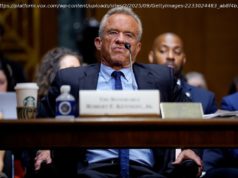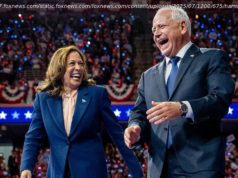The bank’s board is blaming former CEO John Stumpf for being blind to an out-of-control sales culture
Wells Fargo ( WFC ) is clawing back more than $75 million of pay from its former chief executive, John Stumpf, and the retail bank leader blamed for creating an out-of-control sales culture.
A “broken” sales model and a defensive boss obsessed with stamping out negative views about her division are among the root causes of Wells Fargo & Co’s devastating sales scandal, an internal investigation found. Carrie Tolstedt, the retail bank leader, had been fired for cause and it would be forfeiting her outstanding stock options with an approximate value of $47.3 million, the company said. Wells Fargo said it had decided to claw back approximately $28 million of Stumpf’s bonus, which was paid in March 2016.
Stumpf, who had been named “banker of the year” before the problems came to light, last year became a lightning rod over banking ethics when an investigation found employees had covertly opened more than 2 million accounts that may not have been authorized by customers. The probe into how the San Francisco-based bank could have allowed abusive sales practices to fester for years at its branch network laid most of the blame on Tolstedt and some of her management team, in a report released to media on Monday.
“Tolstedt fostered an insular culture at the top of the Community Bank and had an ‘inner circle’ of staff that supported her, reinforced her views and protected her,” the 110-page report said. “She resisted and rejected the near-unanimous view of senior regional bank leaders that the sales goals were unreasonable and led to negative outcomes and improper behavior.”
In the report, which was carried out by the bank’s chairman Stephan Sanger and three other independent directors, Tolstedt is blamed for ignoring the systemic nature of the problem which was pinned instead on individual wrongdoers and she was accused of obstructing the board’s efforts to get to the bottom of what was going on.
Wells Fargo’s CEO has claimed he first heard about the creation of fake accounts in 2013, but only on „CBS This Morning,“ one whistleblower says …
Stumpf, who retired under pressure from the scandal in October, was criticized for failing to grasp the gravity of the sales practice abuses and their impact on the bank.
“Stumpf’s commitment to the sales culture also led him to minimize problems with it, even when plausibly brought to his attention,” the report stated. “Stumpf was by nature an optimistic executive who refused to believe that the sales model was seriously impaired.”
Stumpf was described as someone who was blinded by Wells Fargo’s cross-selling success. He was also full of admiration for Tolstedt, with whom he had a long working relationship. According to one director, Stumpf praised Tolstedt as the “best banker in America.”
The report said Tolstedt hid the scale of the misconduct from the board, which only discovered that 5,300 staff had been fired for opening over 2 million unauthorized accounts when the bank reached a $185 million settlement with regulators in September last year.
On the advice of her lawyers, Tolstedt declined to be interviewed for the investigation.
In total, the bank has fired five senior retail bank executives, including Tolstedt, over the scandal and has imposed forfeitures, clawbacks and compensation adjustments on senior leaders totaling more than $180 million, including $69 million from Stumpf and $67 million from Tolstedt.
Wells Fargo CEO John Stumpf took another beating from Congress Thursday over phony accounts employees created to meet sales quotas. But he insist…
Among its regional bank-wide sales campaigns, Wells Fargo & Co’s “Jump into January” program was notorious for the impact it had on staff.
Initially designed to motivate branch employees to exceed sales goals, the pressure to beat higher daily sales targets instead encouraged them to forge customer signatures, hold off on opening accounts signed for in December and target friends and family to make up the numbers, according to the report.
The campaign “became a breeding ground for bad behavior that helped cement the sales culture’s negative characteristics,” witnesses told the report’s authors.
One former branch worker told CBS MoneyWatch last year that the sales goals created a stressful work environment, and that workers were pushed to sell accounts to their family, friends and acquaintances. “Wells Fargo doubled our goals and decreased our performance pay,” the worker said. “Every year the goals went up more and more. Everyone was on anti-anxiety medication.”
Since the scandal broke, the bank has seen a steady decline in the number of consumers opening checking and credit card accounts and it has lost its status as America’s most valuable bank by market value.
Sanger, a board member since 2003, is under pressure to assure investors and regulators that he is rooting out the bank’s problems after a welter of criticism that the board didn’t do enough despite knowing about the problem since 2014.
According to the report, multiple board members felt misled by a presentation by Tolstedt and others to the board’s risk committee in May 2015. The board members said they left thinking that between 200 and 300 employees had been fired for sales practice abuses and the problem was largely concentrated in southern California.
It was another tough week for top executives at Wells Fargo. The bank’s CEO was grilled again on Capitol Hill over allegations that Wells Fargo o…
Last week, influential proxy adviser Institutional Shareholder Services recommended investors vote to replace the majority of directors at Wells Fargo, including Sanger and the other three independent directors, at its April 25 annual meeting.
The Justice Department, meanwhile, is investigating whether executives hid details from the company board and regulators as the problem grew over the years, people familiar with the matter have told Reuters. U. S. Attorney offices in San Francisco and Charlotte, North Carolina, are also investigating.
The report criticized the board for not centralizing the risk functions at the bank earlier, for not requesting more detailed reports from management and for not insisting Stumpf get rid of Tolstedt sooner.
Tim Sloan, who replaced Stumpf as chief executive, is described in the report as having little contact with sales practices at the bank before becoming chief operating officer and Tolstedt’s boss in November 2015. Six months later he told her to step aside.
Since the scandal broke, the bank has ended sales targets, changed pay incentives for branch staff, separated the role of chairman and chief executive and hired new directors to its board.
A big part of Wells Fargo’s problem was its decentralized business model, which meant the retail bank was able to keep inquiries from head office at arm’s length and there was no joined-up effort by either the bank’s human resources or legal divisions to track and analyze the scale of the problem.






